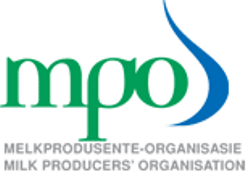
MPO POINTER 4/22 JUNE 2021
Total milk supply
Calculating the total milk supply involves the conversion of imported and exported dairy products to milk equivalent litres. The calculation methodology that the MPO and SAMPRO use differs in that the MPO includes sales to other Southern African Customs Union (SACU) countries (Botswana, Lesotho, Namibia and Eswatini) as part of our export complex. The equation used is: unprocessed milk plus imports minus exports.
The graph below provides a time series from January 2017 to April 2021. The sources for the data are Milk South Africa and the South African Revenue Services (SARS) as provided by Agri Inspec. The SARS data are lagged by one month, i.e. the data for May 2021 will be available on the last working day of June 2021 at 15h00.
From Figure 1, it is clear that the year-to-date total milk supply in 2021 differs substantially from that of the other four years presented on the graph. The cumulative April 2021 total milk supply was 14,6% less than in 2020 and 12,8% less than in 2019. The factors that contributed to this phenomenon were a mix of growth in exports of 10,4% and 26,2%, respectively, over the same period in 2020 and 2019 and lower unprocessed milk production (−3,65%) for the first four months of 2021, when compared with the same period in 2020. Imports during the first four months of 2021 were only 2,5% higher than in 2020.
Figure 1 Total milk supply

The difference in total milk supply for the first four months of 2021, compared with the same period in 2020, was 150 million litres. It is possible to make up the lower milk supply, with adequate margins to milk farmers that will stimulate unprocessed milk production. The resultant viewpoint is that the dairy market is currently out of balance, even if consumer demand is taking strain.
What are the latest indications regarding dairy consumption at retail level?
The trends in retail sales of dairy products up to the March 2021 report are produced by the SAMPRO office and form part of SAMPRO’s Industry Information Project. The report is based on information received from NielsenIQ and covers the sales of nine dairy products. NielsenIQ provides information based on monthly surveys of the retail sales of milk and other dairy products. NielsenIQ’s surveys in respect of UHT processed milk, flavoured milk, yoghurt, maas, and pre-packaged cheese, cover the retail sales in the following types of stores: Major stores (hypermarkets and a defined group of supermarkets consisting of Shoprite, Checkers, Pick ’n Pay Supers, Pick ’n Pay Family, Superspar, and Woolworths (Food)), convenience stores (branded superettes consisting of Kwikspar, OK Foods, Sentra, Pick ’n Pay mini, Score, Shield (Retail), Friendly’s, 7-Eleven, and Forecourts), Urban Counter, and self-service and rural independents. In the case of fresh milk, cream, butter, and cream cheese, NielsenIQ’s surveys cover only ‘major stores’.
Please note that NielsenIQ have changed their criteria and sample size and the information in the latest report from SAMPRO will differ from the information captured in respect of the retail sales up to December 2020, and as captured in previous SAMPRO reports. Non-retail sales, such as sales to wholesalers and industrial buyers, which form a significant part of the total sales of dairy products, are not part of the NielsenIQ surveys.
Table 1 Changes in the quantities of retail sales of specific dairy products

Upon a first glance at Table 1, the numerous red values indicating declining sales volumes of the monitored dairy products create a measure of unease and nervousness regarding a decline in consumption at consumer level. The drop in the sales of UHT processed milk in March 2021 compared to March 2020 is frightening. However, March 2020 was an abnormal month because of the uncertainty created by the pandemic and the build-up to the hard lockdown. The figures below provide perspective.
Figure 2 UHT processed milk average daily sales and average price

Figure 3 Yoghurt average daily sales and average price

Figure 4 Pre-packed cheese average daily sales and average price

Figure 5 Maas average daily sales and average price

From the above figures, it is clear that in the case of UHT processed milk, Maas, and pre-packed cheese, March 2020 achieved all-time high sales volumes as consumers stockpiled certain products. The March 2020 yoghurt sales volume was also at a very high level. Therefore, the interpretation of developments in retail sales per the above survey by NielsenIQ should be read with caution. The changes in sales quantity, when longer time series are compared, provide a different picture due to the dilution of the extreme effects of March 2020.
Nevertheless, sales volumes did decrease, but on the other hand, sales of other dairy products (e.g. Mozzarella cheese), which almost came to a standstill due to the closure of fast-food outlets during some of the lockdown levels, improved.
Table 2 The average retail prices of specific dairy products in March 2021, compared to the average retail prices of the products concerned in specific previous months of 2020 and 2019

Table 2 gives an indication of changes in retail prices for specific dairy products. The different intervals used in the information as supplied by NielsenIQ and the resultant percentage change need interrogation. To illustrate the difficulty in taking the percentage changes at face value, Figure 2 will be examined. Figure 2 deals among others, with the average UHT processed milk prices. Trend line AB on the graph shows a steep upward slope, due to a strong increase in the UHT processed milk price from March 2020 to August 2020. Thereafter, the price decreased for four months, increased for two months, and then moved sideways, creating trend line CD. Depending on what interval is used, you could lose the effect of trend line AB and only capture the events reflected by trend line CD. This example is used to illuminate the complexities of data analysis and the dangers of an oversimplistic approach.
For some time the economic desk of the MPO has been warning about the pressure on consumer expenditure as result of the poor performance of South Africa’s gross domestic product, coupled with the effects of the pandemic on household income. However, the latest NielsenIQ information does not provide persuasive evidence that this has happened. Nevertheless, a cautious approach throughout the value chain is needed.
Market conditions in the dairy industry can change in the short term (e.g. large-scale imports could arrive), and therefore it would be prudent for dairy farmers to produce in line with their contract with the relevant processor.
Bertus van Heerden, chief economist, Milk Producers’ Organisation (MPO)
Download the MPO Pointer 4 22 June 2021 here.
Published on Tuesday, 22nd June 2021 - 16:21
Recent Posts
disclaimer









